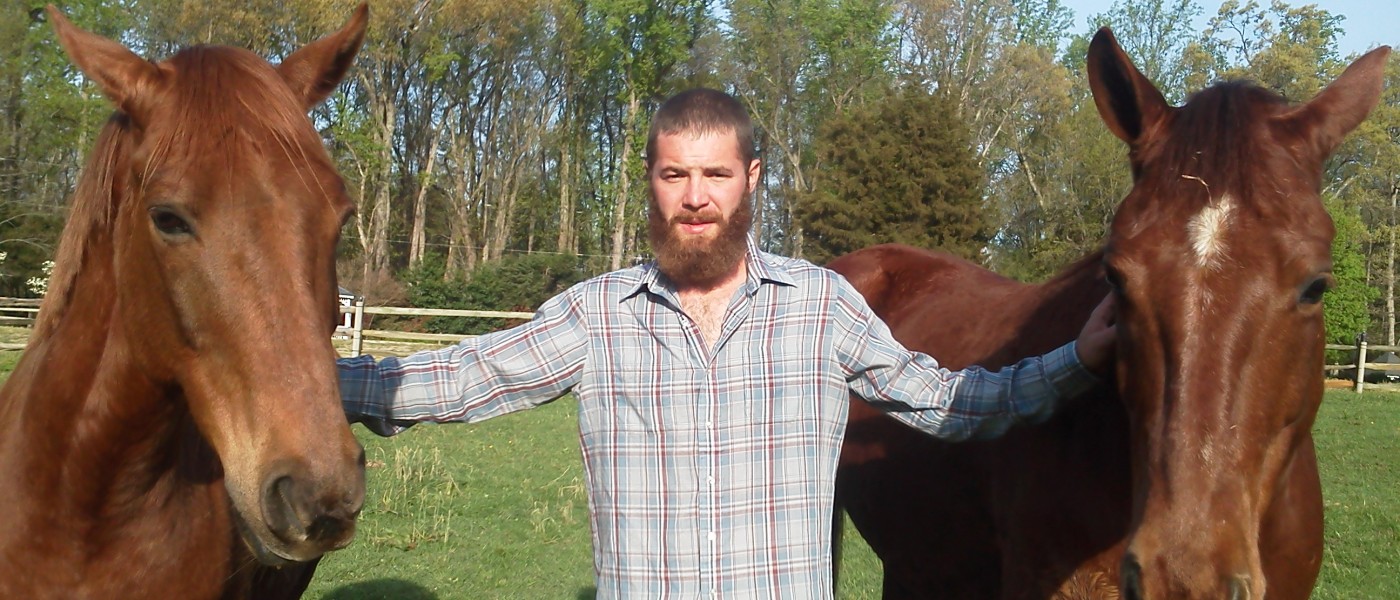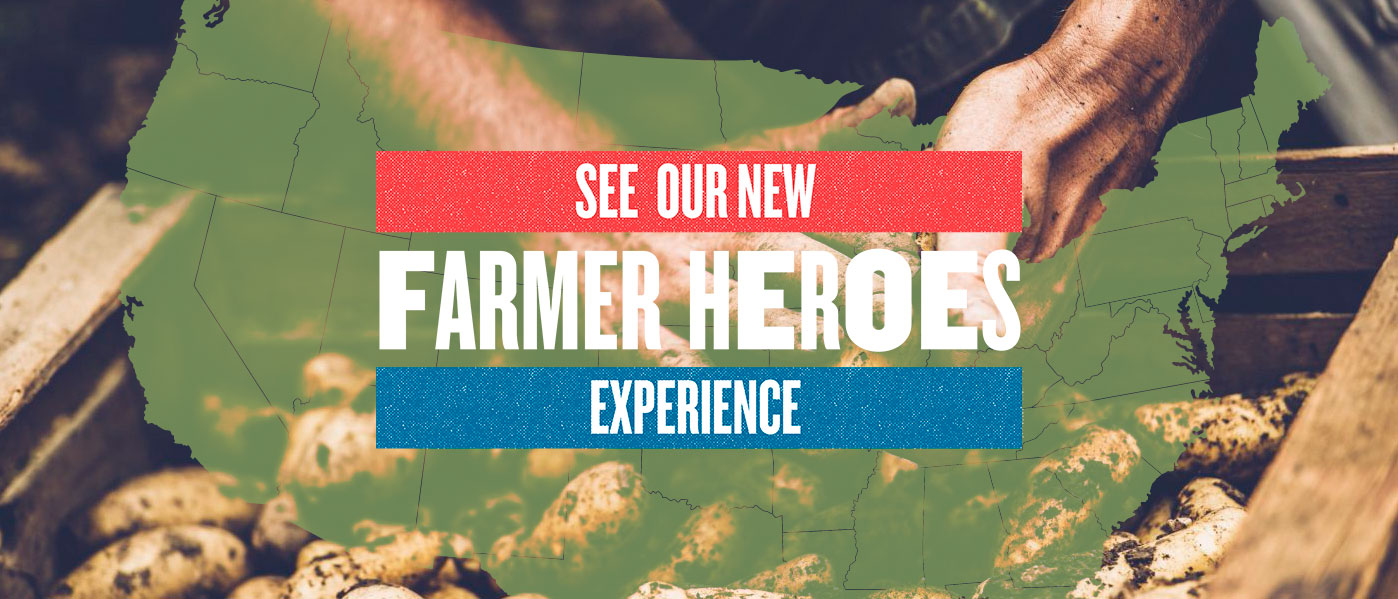Gary Purgason farms at Buck Pigg Plantation, a 97-acre free-range chicken and produce farm in Madison, North Carolina. Thanks to a grant from the Rural Advancement Foundation International (RAFI) and their Tobacco Communities Reinvestment Fund, Gary has been able to turn his family’s dormant tobacco farm into fertile land for a variety of fruits and vegetables and a free-range poultry operation.
Gary Purgason’s farmland has been in his family for four generations. But his ancestors probably wouldn’t recognize the farm he works today. For decades, his land was utilized as a tobacco farm at the peak of tobacco’s reign in the Southeastern United States. Today, as tobacco use among Americans has declined, tobacco farms across the region have been abandoned and left fallow.
Fortunately, that’s changing. In North Carolina, the Rural Advancement Foundation International (RAFI), a long-time partner of Farm Aid’s, is working to restore former tobacco land, rejuvenating family farm agriculture and the local economy in turn. RAFI’s Tobacco Communities Reinvestment Fund assists farmers and rural communities in developing new sources of agricultural income. The program provides awards of up to $10,000 to individual farmers or farmer collaboratives in the state, with notable dividends. Over the last three years, RAFI has awarded $3.6 million to 367 farmers, creating more than 4,100 jobs with an economic impact of $733 million to the state.
Gary’s family farm is one such grantee of RAFI’s. And with the grant’s help, he has turned 14 acres of former tobacco land into seven vibrant acres of fresh produce and four acres of pasture for his 50 free-range chickens (who will soon welcome an additional 50 chicks this spring). With the help of his dad, Gary now grows tomatoes, corn, watermelon, cantaloupe, squash, cucumbers, figs, okra, cherries and mushrooms, and also keeps honeybees. He markets through CSA programs in the area, and is selling his food through a year-round online farmer’s market at Piedmont Local Foods.
Past to present
Gary’s family has a rich history of farming. His uncle, Pete Carter, has a farm right down the road and growing up, Gary frequently worked for him and neighboring farmers to make some extra money. Gary’s dad kept small plots of land for gardening and vegetables, and his mother has worked at the U.S. Department of Agriculture (USDA) for years. But although he was brought up around farming, Gary says, “I didn’t know that I actually wanted to be a farmer for the rest of my life.”
Before committing to life on the land, Gary went to college and joined the U.S. Marines Corps, spending over 4 years in active duty under Operation Iraqi Freedom and completing a 9-month tour of Iraq before coming back to North Carolina. “I joined the Corps when I was 19,” he shares. “I wanted to straighten myself out, and that was the best way that I knew how to do it.”
Gary came home in 2008, and saw his family’s land as the path to a meaningful career. “When I left the Marine Corps, this country was in a recession. I was looking for something to do, and we had some acreage in the family that I thought I could use,” he recalls. “I needed to feed myself, and hopefully make a little bit of money on the side.”
“The military taught me discipline and leadership,” he explains. In his opinion, those were the two things he’d need to completely revamp the family’s property. He was right. The transition has had its challenges. Gary needed to make major modifications to get the farm up and running. For example, he had to lay 1,100 feet of pipe to bring fresh water to his chickens and build two chicken houses and a new washhouse for his vegetables. But like so many new farmers, he was resourceful. “I used material that I had laying around the farm,” he explains. That way he could cut down on his costs and make use of wood rather than having it waste away. He also faced the threat of wildlife in the area killing his chickens and eating his vegetables, and needed to drain sediment from the soggy tobacco fields.
Yet Gary still finds his biggest struggle is the staggering amount of physical labor that goes into owning a farm. “My biggest limitation on the farm is dependable labor,” he explains. “But I’ve got family, and they are doing everything that they can do; I can’t ask much more.” Gary is hoping to hire somebody in the future to help out on the farm.
Gary is hopeful about the future and is gearing up for another big growing season. He is dedicated to keeping the farm in agricultural production and tending to it the best he can. “I want to be completely self-sustained, pay off my expenses, and provide an income for me and my future family,” he says. He hopes to have a breakthrough year with his fresh produce, vegetables and free-range chickens.
At the age of twenty-seven, Gary is half the age of the average farmer in the U.S. He is focused on learning everything he can about farming and modifying his farm to meet his goals for the future. He doesn’t let his age hold him back. “At all the farmer’s meetings and markets, I am usually the youngest one there. But over time, I’ve become an equal,” he says.
As one of many innovative and determined individuals making up the next generation of farmers, he reflects on what it means to have the torch passed on. “Most of my life, the people I looked up to were farmers. And now to say that I am one of them, well there’s been a lot of pride in it.”
Grant programs like the Tobacco Reinvestment Fund, as well as emerging programs for new and beginning farmers through the USDA, are helping to grow new farmers like Gary and repurpose abandoned land into productive farms. These visionary programs are propelling a new era of local and regional food systems.
To learn more about Gary and Buck Pigg Plantation, watch the video below from his interview with RAFI, or visit his farm’s Facebook page.
Further Reading
- This Ask Farm Aid column answers a reader question asking if the USDA is truly supporting local and regional agriculture.
- Eating local food means eating seasonal food. Find out how and tools to help you in Putting it into Practice.
- Visit our Find Good Food page to find food from family farmers like Gary in your area.



